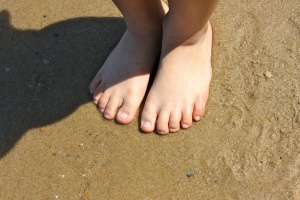From the Boston Globe: listen to the story here…
http://commonhealth.wbur.org/2014/02/homeless-cold-winter-shelter
Why Some Bostonians Refuse Shelter In The Dead Of Winter, And How They Survive
A van crawls through the streets of downtown Boston, pausing at the intricate iron entrance to a city landmark or a doorway carved in stone. By day, these openings are passages to power and wealth. At night, they are coveted shelters from wind, sleet or snow. People inside the van know this. Their carefully trained eyes scan the shadows of every building, stairway or bench, watching for hints of life.
On Winter Street, at the end of a brick alley, there’s a flicker of movement. The van pulls over and a figure in a light coat emerges.
“Is that you James?” asks a man with a reassuring, deep voice who has stepped out of the van. “You going in tonight?”
Nelson Bennett knows James. He sees this young man often as Bennett circles downtown Boston in Pine Street Inn’s outreach van. It’s packed with blankets, hats, gloves, underwear, socks and sandwiches. Large insulated containers keep hot water handy for instant soup, oatmeal and hot chocolate.
“It always helps, especially in these conditions, to get some warm liquid into your body,” Bennett says.
Bennett and his crew are also out every night trying to persuade people who plan to sleep on the street to spend the night in a shelter instead.
Now, with the temperature at 15 degrees and dropping, Bennett wants to know, will James come in?
No, James says. His girlfriend was assaulted at one of the shelters and won’t go back, so he’s staying out with her. James stands next to a pile of ripped boxes from which he’s pulling pieces to build their bed. It will be three layers of cardboard pushed up against a glass office front with a short wall around the sides.
“I kind of go a little overboard,” James says, laughing. “I don’t want any of the rodents and whatnot getting in.”
James explains he collects new pieces of cardboard every night and throws them away in the morning.
“Once you get in this situation, it’s like impossible” to get a job and get back into housing, James explains. “I have my own issues up here,” he adds, tapping his head. “I’ve had a lot happen, but I don’t want to deal with it so…”
“Where do you guys stay during the day?” asks Lyndia Downie, the president and executive director at Pine Street Inn who is listening to James’ story. “Have you applied for housing?
Yes, James says, pinching his hands to stave off frostbite, but he’s discouraged.
“If you don’t have kids or you don’t have a disability, they make it seem like you can never get housing. I can’t even explain to you how hopeless I feel sometimes,” James says. “My dream is to be able to come home from work again, just fall back on the couch and mind my own business, and I feel like it’s never going to happen.”
Downie takes some more information from James that she will give to Pine Street’s daytime street team. Bennett brings James some underwear, hot chocolate and two blankets. They are the only bedding James has.
“Thank you, thank you very much,” James says as the crew moves on.
At this hour, around midnight, the streets are empty except for a few garbage trucks, taxis and Pine Street’s van.
‘Justice To The Body’
Outside Macy’s in Downtown Crossing, Bennett approaches bundles of people in each doorway. Cindy peaks out from under a cloth sheet, a Mylar and one wool blanket. She and her husband Carl are among three couples who claim the store’s sheltered entrances every night, in snow, sleet and bitter winds.
“Because we’re married,” Cindy says. “We stay together. We sleep together. There needs to be shelters where married people can get on their feet as well.”
Cindy says she sleeps with one eye open. A few nights ago someone took one of the couple’s blankets.
“But we manage,” Cindy says. “Body heat, love, big word, [and] strength.”
A van outreach worker comes back with the couple’s order, soup and sandwiches. Carl asks if they can also get a blanket.
Pine Street will hand out 60 to 70 blankets tonight, between two vans: one that circles downtown and another that runs through Back Bay into Brighton and Chestnut Hill. A handful of people refuse all offers of help.
“This guy won’t talk to us,” Bennett says walking up to one of two cocooned figures. He stands quietly for a minute, watching for any sign of life.
“We’ll make sure they’re OK, they’re breathing, the blankets are moving, and we’ll leave ‘em alone,” Bennett explains.
The van rolls down Summer Street to a brick facade with an arched opening. The door is four or five feet back, leaving a covered, nearly enclosed space that almost hides a man. Downie approaches.
“You don’t have to come in all night,” she says with quiet pleading. “You could just come in for a few hours and get out of the cold.”
“I don’t mind,” says the man named Stephen.
“I’m cool, or actually I’m pretty warm, I should say,” he laughs. “I like my privacy. That’s all.”
Stephen chooses solitude over the warmth of a crowded shelter, where men are packed tight on a lobby floor this particular night because all the beds are full. Stephen forces himself to get up and move on every morning around 4 a.m. He doesn’t want to get caught sleeping here, to risk losing this space.
“I just don’t want to be in the way, you know what I mean, to be an eyesore for everybody,” Stephen says.
The temperature has dropped to 13 degrees and there’s a biting wind.
A man carrying one sheet of cardboard approaches the van, asking for a coat. There aren’t any. He settles, gratefully, for chicken noodle soup. “Aw you guys are great, thanks,” says the man, also named James.
This James is a gambler, who says he’s just back from Foxwoods where he stayed in one of the big hotels and feasted on lobster and steak.
“I’m bankin’ three grand,” James whispers to Bennett. “I caught on to how to beat the casino at their own game, $400-500 a week, guaranteed. It’s a no-lose game. Where I’m headed now is paradise,” James says as he wanders off.
It’s these guys who Downie worries about the most, the ones who aren’t speaking rationally, aren’t dressed for the cold, who aren’t suicidal but show signs of mental illness.
“He lives in what I call no man’s land,” Downie says, “because if you’re a danger to yourself there’s a possibility of some kind of commitment or guardianship, but if you’re not, your options are pretty limited. In some ways the disease stops you from getting treatment so it’s an odd paradox for people.”
The van has 30 to 35 regular stops, places where the crew expects to find people sleeping outside. The stops change with construction, or as businesses crack down on overnight street occupants.
Street regulars, as some of the homeless folks call themselves, know where to find the van. Subhash is waiting as Bennett hops out on a corner near the Theater District.
“How you doing, boss? You going in tonight?” Bennett asks. And finally, Bennett gets the answer he’s been hoping for, a yes.
Subhash says he had a strategy he hoped would get him through the night.
“I was planning to just walk around,” Subhash explains. “Sleeping can get a little tough in the cold. So probably like 30 minute lie down, then you have to start walking again.”
Except Subhash is now losing feeling in his legs. Still, deciding to go in, where he’ll be on a floor, with someone’s feet in his face, is not the obvious choice for Subhash.
“If you’re homeless, sometimes you just want to lose the crowd,” Subhash says, “to feel a little more reassured about who I am and what not. But a lot of times it doesn’t really do justice to the body. You have to compromise one way or another.”
As the van nears Chinatown, it’s swarmed by almost a dozen men and women in their late teens or 20s.
“I need gloves and socks, for me and my girl,” one man calls out.
“Yeah,” says another, “we need gloves over here.”
The crew runs out of gloves and blankets and heads back to Pine Street Inn to restock.
“Normally we don’t get flooded like that where there’s all those people,” says Jill Fortuna, a full-time outreach counselor on the van. Fortuna says many of these young people aren’t regulars and may just be passing through Boston.
“It’s worrisome to see kids that young out there,” Downie says.
Back at Pine Street, Fortuna unlocks the door to a metal storage container and squints into the dark. Bennett points a flashlight at the labels on a stack of boxes.
“Psyched,” Downie yells after a few seconds. Bennett grins, “gloves, gloves, yes, yes.”
Bennett rips open the box to reveal dozens of flat packages, wrapped by volunteers from Natixis, in red snowflake and green snowman paper.
Downie bursts into laughter. It’s Christmas all over again, here at 1 a.m. in the dead of a cold winter night. But could the box be mislabeled?
“Let’s hope there’s gloves in here,” Downie says.
She and Bennett rip open the packages with the fury of any 8 year old.
“Yep, bingo,” Bennett says.
Downie is relieved.
“We’ve been going through gloves like crazy cause it’s been so cold,” she says.
The restocked van heads toward North Station. It’s closed, but four teenagers huddle near the entrance. Fortuna recognizes them.
“They’re a bunch of young kids that just recently showed up,” she says. “They’ll make a big huge bed near Haymarket. There’s four or five of them who sleep there.”
One by one, the teenagers come to the passenger window of the van. Ben Williams, the driver, writes down their name, date of birth, the last four digits of the Social Security number and the ZIP code of their last residence, information for Pine Street’s client database. One young woman, Marie, asks for soup and blankets, but says she’d rather sleep outside than go in.
“I’ve been doing it for a few years. It doesn’t really bother me,” Marie says in a sing-song voice. “You just bundle up and all that jazz.”
Marie shrugs and walks away as a man named Michael steps forward, saying he can’t take it any more. “The temperature, the wind, there’s no public restrooms,” he explains.
Michael just got out of prison on a cocaine conviction.
“Come to find out,” Michael says, “the lady who tested my drugs said the drugs were real. Annie Dookhan, yeah. Now I come home and there’s no housing.”
Michael says he doesn’t like shelters because the rules seems to change depending on who’s in charge.
“I really think about going back to jail, cause it’s like I know what to expect,” he says. “I expect to be in a cell, with a bed, a toilet, two inmates, breakfast, lunch and dinner. It’s simple.”
As the van drops Michael at Pine Street, Downie imagines a night when there won’t be anyone sleeping on the streets and shelters won’t be crowded. She says it would take about 2,000 new rooms.
Research shows that the units would pay for themselves over time, Downie adds, “because the expensive emergency service numbers go down and that offsets any new housing dollars. So doing nothing for chronically homeless people costs more money than putting them in supportive housing.”
The Patrick administration seems to agree. It expects to release details of a multimillion-dollar social investment project this spring aimed at reducing the number people like Cindy, James, Subhash and Michael who spend nights on the street, even in the dead of winter.
What Happens To The Body Of A Person Who Sleeps Outside In Extreme Cold?
Dr. Jim O’Connell, with Boston Health Care for the Homeless Program, explains:
When a person gets cold, their body shuts down blood going to the skin to preserve warmth near the heart. When hands and feet don’t have enough blood they may develop frostbite.
With frostbite, hands, feet, ears and noses can swell and blister. The skin turns black and necrotic. In cases of severe frostbite, dead tissue will fall off or autoamputate. Some patients are left with a disfigured toe or finger, some lose the tip or whole digit.
In the last two weeks in Boston, a homeless man who sleeps on the street lost one leg below the knee as well as part of the other foot to frostbite. Another man will need to have one of his legs amputated below the knee.
O’Connell explains the body’s reaction to cold in depth here.







